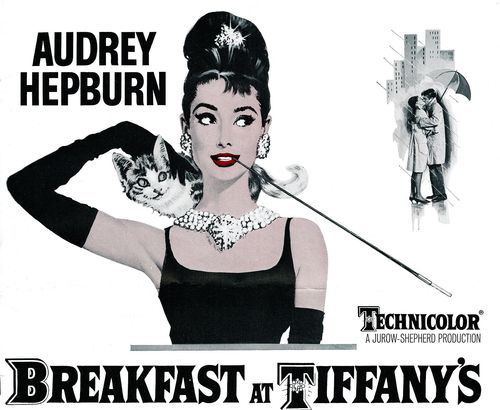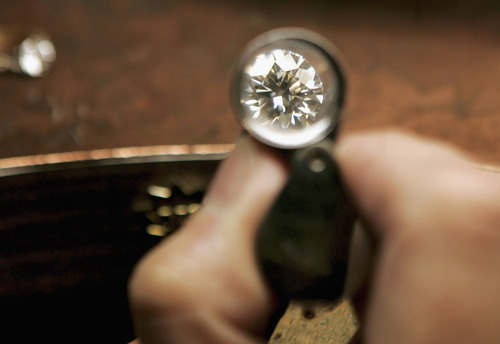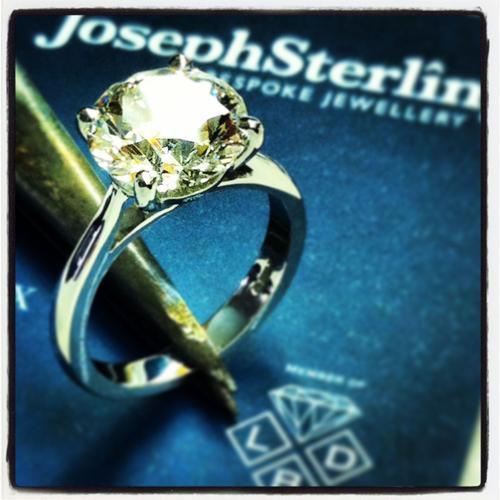Diamonds, are they really as valuable as we think they are, or we the victims of the best marketing campaign in history?
In my latest blog I try to unravel the mysteries of how a diamond has become such a necessity to modern life. This is perhaps a result of the greatest advertising and marketing campaign ever!! I hope you enjoy my latest installation to my Blog About Diamonds.
Let’s be honest, it took a brilliant collaboration of minds to come up with the notion that diamonds are valuable and are essential in wealthy circles to the upper echelons of society. Let’s not forget either that it was only in the late 19th century that diamonds were properly discovered. Prior to this they were only discovered in few riverbeds in India and the jungles of Brazil that amounted to only a few pounds in weight a year. Towards the end of that century however is when the boom happened. Huge diamond mines were discovered near Orange River in South Africa and miners came from all around the globe to be part of the latest rush where diamonds were being scooped out by the ton. Suddenly the market was flooded.
It was the British who had been financing and organising the South African mines and they soon realised that their investment was in danger. After all, the entire diamond price relied solely on the fact that they were rare and scarce. The financiers were rightly worried that with new mines popping up, the value of their diamonds would be reduced as competitors offered the same goods at cheaper prices. One day all the major investors held a meeting the conclusion was that in order for the diamond mines to succeed they had to join together. They had to unite and become one. They had to merge their interests into a single entity and become powerful enough to control production and preserve the illusion that diamonds were scarce. The creation became known as De Beers Consolidated Mines Ltd. As De Beers took control of all aspects of the worlds diamonds, it assumed many forms in order to protect its investment and growth on the world stage. It is claimed that at its height, which was most of the twentieth century, it controlled more that 95% of the world’s diamonds.
De Beers proved to be the most successful cartel arrangement in the chronicles of modern history. All other commodities such as gold, silver, wheat, copper, and property fluctuated wildly in response to economic times and have gone up as well as down, diamonds have continued with few exceptions to continue to advance upwards in price every year since the Great Depression of the 1930’s, it got to a point in the late 1970’s that even speculators began buying diamonds as security against inflation and recession.
So here we have a tiny crystal of carbon and De Beers have to introduce this to the world in such a way that the price will increase year on year. They had to find the best way create and market them so that people would never want to resell them. They needed to instil in us that diamonds are valuable and that we should never part with them. We all know what the end result was, however how they went about it was fascinating. They decide to market diamonds as a token of wealth, power and romance. To achieve this they had control the supply and the demand. The message had to be sent out to men and women. The message was that diamonds symbolise love and are an inseparable part of courtship and married life. To stabilise the market De Beers had to endow these stones with a sentiment that would prevent the public from ever reselling them. They had to create an illusion that diamonds were forever. And when they say “forever” they meant in the sense that they should never be sold.
Bloody brilliant. It’s a genius idea that has seen the rise and rise of diamond prices over the decades. This is when the advertising and marketing campaign began. It was a campaign so powerful that it was to change the way diamonds were perceived forever.
The year was 1938 and Harry Oppenheimer was recommended by his bank to travel from Johannesburg in South Africa, to New York City to meet with the then president of a leading advertising agency. Oppenheimer’s bankers called a meeting, as they were concerned about the declining price of diamonds, which were affecting the market worldwide. In countries like England and France diamonds were still considered to be jewels for only the very wealthy, such as the Royal Family and aristocrats. In countries such as Austria, Italy Spain and Germany the idea of giving a diamond ring had never really taken off. So all that seemed to remain was the Untied States as the only real market for De Beers. As a matter of fact, in 1938 three quarters of the cartels diamonds were sold as engagement rings in the United States. However, as it turned out most of these stones were smaller and of lower quality than the ones which were sold in Europe and had an average price of around $75-$85 apiece. With this in mind, Oppenheimer and the bankers believed that a well orchestrated advertising campaign could persuade Americans to buy more expensive diamonds, and an introduction by the bankers to Gerold Lauck, president of N.W. Ayer, one of Americas leading advertising companies, took place.
Oppenheimer suggested to Lauck that his agency set out a plan for creating a new image for diamonds among Americans. He assure Lauck that De Beers had not called any other agency, and they had exclusive free range to come up with what they felt would best suit De Beers. If their proposals met with his fathers’ approval, then N. W. Ayer would be the exclusive marketing and advertising agents in the United States. Oppenheimer was happy to underwrite all the costs necessary for the research of the campaign. Lauck accepted his offer there and then.
It’s pretty interesting what sort of things you uncover when you start to dig deep and research things. Once N. W. Ayer really started to sink their teeth into the American diamond market they found that since the end of World War 1, in 1919, the total amount of diamonds sold in America measured in carats, had declined by around 50%. At the same time though the quality of the diamonds measured in dollar value, had declined almost by 100%. A memo that was circulated by Ayer concluded that the state of the diamond market was “the result of the economy, changes in social attitudes and the promotion of competitive luxuries”. It was further deduced that since “young men buy over 90% of all engagement rings” it would be crucial to inspire them with the idea that diamonds are actually not only a great gift of love, but the only true gift of love. And of course with this comes the added phrase the larger the diamond, the more you love her. Similarly though, women had to be educated to accept that diamonds really are the only true gesture of love and an integral part of any relationship.
The scene was set. The brief was delivered and now the hard work began. Since the plan was to romanticise diamonds, and this would require subtly altering the publics perception on the way men go about wooing a woman, N. W. Ayer strongly suggested exploiting the relatively new medium of using motion pictures. Film stars, these were they new icons of the world. The way we all saw things happening on the big screen was they way to go. Everyone saw himself or herself as a Clark Gable or Marilyn Monroe. These icons would be given diamonds to use as the symbols of indestructible love. In addition the agency suggested offering diamonds to Hollywood’s heroes to be used in photo shoots and publicity shots that would then be published worldwide. Movie stars turning up at premiers would be draped in De Beers diamonds and the sent to all the newspapers and magazines around the world. This would reinforce the story between romance and diamonds. Fashion designers would talk on the radio about the “trends towards diamonds”. The advertising company N. W. Ayer also planned to use the British Royal family to help increase the publics awareness of how beautiful owning a diamond can be. A memo said “since Great Britain has such an important interest in the diamond industry, the royal couple could be of tremendous assistance to this British industry by wearing diamonds rather than other jewels.” A few years later, Queen Elizabeth later went on a well publicised trip to several South African diamond mines, and she happily accepted a diamond from Oppenheimer.
By 1941, the advertising agency had reported to its client that it had already achieved impressive results. The sale of diamonds had increased some 55% in the US since 1938 and sales were increasing upwards. Another brainstorming session was pencilled in and it was noted at the meeting that its campaign had required “the conception of a new form of advertising. There was no brand name to be impressed on the public. There was simply an idea.” It further claimed that “ a new type of art was devised and a new colour, diamond blue, was created and used in these campaigns.”
It wasn’t until 1947 however in its strategy plan that the advertising agency strongly emphasised that they wanted a physiological approach. They stated “we are dealing with a problem in mass psychology. We seek to strengthen the tradition of the diamond engagement ring. To make it a psychological necessity, we must be capable of competing successfully at the retail level with utilities, goods and services”. They had defined as their target audience “some 70 million people 15 years and older whose opinion we hope to influence in support of our objectives”. They were to arrange for lectures to visit high schools across the country and give talks revolving around the diamond engagement ring. They were to reach out to thousands of girls in their assemblies, classes and after school social activities. It really was a ruthless way to achieve their objectives. Let’s not forget that back then people got engaged much younger than they do today. A few months later and the agency explained in a memo to De Beers that they had organised a weekly slot called “Hollywood Personalities”. They were to provide all the leading publications across the United States with the descriptions of the diamonds worn by movie stars and focus on certain celebrities that week. They were to continue their efforts to encourage all the news agencies to celebrities wearing diamond rings as symbols of love.
By now they needed to come up with a slogan. One that they tried but failed at was “I wish I had what she has”. De Beers weren’t too happy with this and asked them to try again. They needed something that can be related to by everyone. It didn’t matter if you were the accountant in the city or the mechanic’s wife. They wanted something that would express romance and timelessness. Late one evening a copywriter for N. W. Ayer came up with the caption “A Diamond Is Forever”, which was scribbled on the bottom of a picture of two young lovers on honeymoon. Of course the irony is remarkable. After all you can in fact chip a diamond. You can discolour a diamond. A diamond can shatter. We can even incinerate a diamond to ash. However it was the concept of eternity, which perfectly captured all the qualities that the advertising agency wanted to ascribe to a diamond. Within a year, “A Diamond Is Forever” became the official motto of De Beers.
So there you have it. From that day to this, the slogan, which has transformed the value of some small meaningless piece of carbon into arguably, the most precious and valuable commodity in the world was born. However it didn’t end there. The key to the success of the advertisers and DeBeers was consistency. They knew they needed to keep diamonds associated with luxury and superiority if they were to maintain their public awareness campaign, not only in the States, but around the world too.
In America, which remained the most important market for most of De Beer’s diamonds, N. W. Ayer recognized the need to create a new demand for diamonds among long-married couples. “Chocolates come, flowers come, furs come,” but such momentary gifts fail to satisfy a woman’s psychological craving for “a renewal of the romance,” N. W. Ayer said in a report. An advertising campaign could instil the idea that the gift of a second diamond, in the later years of marriage, would be accepted as a sign of “ever-growing love.” In 1962, N. W. Ayer asked for authorisation to “begin the long-term process of setting the diamond aside as the only appropriate gift for those later-in-life occasions where sentiment is to be expressed.” De Beers immediately approved the campaign. This is when the diamond eternity ring was born, but that’s a story for another blog
So what can we learn from this? Well to my mind a few things. Firstly if Mr. Oppenheimer hadn’t come along and decided, with a few other minds to take control of the diamond market, instead of leaving each site finder to fight for their own business, then would we still find diamonds as fascinating? I doubt they would be as expensive as they are. Would they still be as demanding? Probably not. It makes you wonder though, what would we be using as an alternative to propose with?
I suppose a lesson to be had, and something we can implement in our own business is that you can take an object, plant an idea about it in someone’s head and repeat it often enough, the public will believe what they hear. And I suppose here ends the lesson. I do hope you found that as interesting as I did.
If you would like an appointment, or you would like Lewis to speak at your event, then please do call for a free consultation in our central London Hatton Garden office and we would be glad to try and help you. Our details are on the main page of the Joseph Sterling website.
Lewis Malka is a recognized expert in making diamond rings as well as being a famous jeweller to the stars. All his blogs are his own opinions. He is a member of the London Diamond Bourse (LDB). You can follow him daily on Facebook - Twitter - and Instagram.
If you would like any bespoke jewellery made, then please visit his website.
Thanks to Edward Jay Epstein for some of the facts included here.
3 notes
enbourse liked this
snooga reblogged this from josephsterling
snooga liked this
josephsterling posted this





